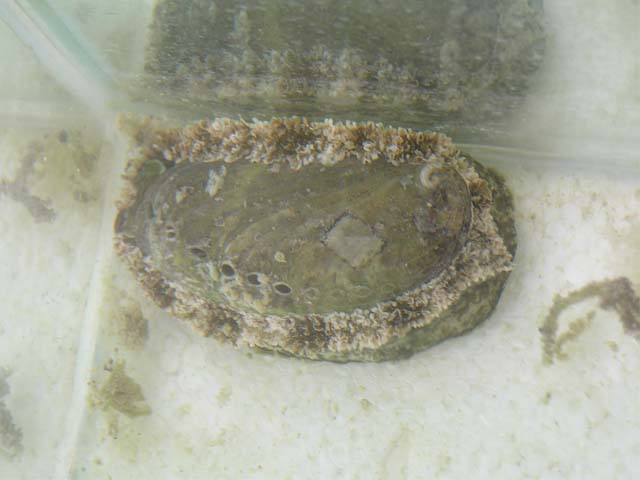| Haliotidae (abalones) |
| 12 cm ShH (male/unsexed) |
|
benthic; marine; depth range 0 - 10 m |
| Indo-West Pacific. |
|
The shell is thin, elongate-ovate in outline with slightly protruding spire. Outer lip slightly sinuous in the middle. Outer surface almost smooth. Holes ovate, nearly flush with surafce of shell, the last 5 to 7 holes open. Colouration: Shell shiny, olive green or brown, with several triangular patches of pale green or cream. Inside of shell highly iridescent (Ref. 128042). |
| Actively collected in the Southeast Asian countries, for its shell and large fleshy animal (Ref. 349). Found in intertidal, on corals (Refs. 75835, 128042). Common, but not aggregating in dense populations. In life, the exceptionally large green mantle almost covers the shell, which is then devoid of encrusting marine growths, unlike those of the other species (Ref. 349). Very active at night (Ref. 799). Feeds on epilithic algae by grazing (Ref. 85382). |
|
(LC); Date assessed: 19 September 2020 Ref. 123251)
|
|
|
Source and more info: www.sealifebase.org. For personal, classroom, and other internal use only. Not for publication.

